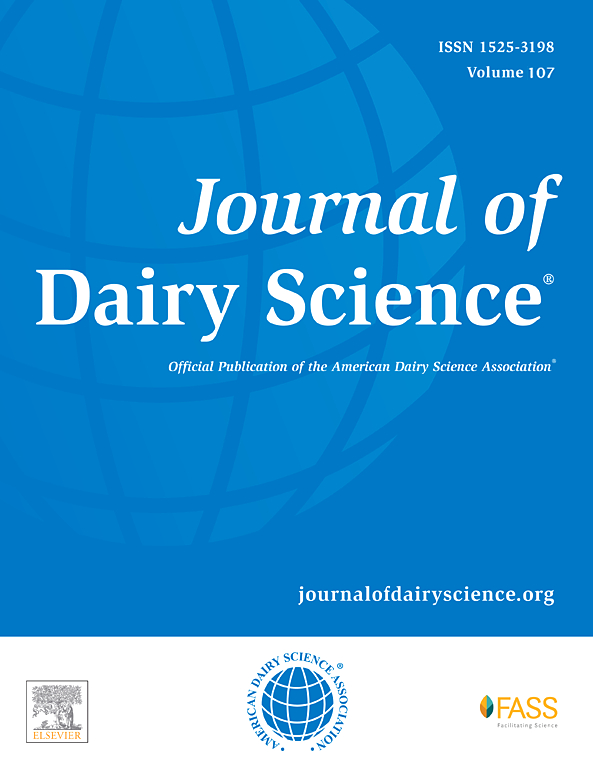From block to shred: Understanding the factors influencing shreddability of mozzarella cheese
IF 3.7
1区 农林科学
Q1 AGRICULTURE, DAIRY & ANIMAL SCIENCE
引用次数: 0
Abstract
Mozzarella cheese is widely used for pizza applications, and it is generally shredded either in conversion plants or in pizzerias. The shreddability of mozzarella cheese is influenced by a variety of factors, and it is critical to understand how different mozzarella cheese types and storage conditions (temperature and age) affect this property. Three batches each of 3 types of mozzarella cheese (low-moisture mozzarella [LMM], low-moisture part-skim mozzarella [LMPS], and reduced-fat mozzarella [RFM]) representing 3 different fat levels were procured directly from a commercial manufacturer and stored at 2 different temperatures (1.67 and 4.44°C) and evaluated for shreddability at 2- and 3-wk storage. Shreddability parameters such as stiction (peak force) and work of grating were significantly affected by fat content and storage time, whereas the weight of the shred obtained after each cycle was significantly affected by fat content and storage temperature. Along with shreddability, other tests, such as texture profile analysis (TPA), wire cutting, stretchability, and dynamic shear rheology (DSR) were performed to understand their relationship with shreddability. Textural parameters were significantly affected by fat content and storage time, whereas wire cutting parameters were significantly affected by fat content, storage time, and temperature. Stretchability and dynamic shear rheology parameters were significantly affected by fat content followed by storage time and temperature. Further shreddability parameters, such as stiction and work of shear had a positive significant correlation, whereas the weight of shreds had a negative significant correlation with unmelt (TPA) and melt parameters (stretchability and DSR). Overall, fat content had the greatest effect on shreddability followed by storage time and temperature. Considering the high correlation of shreddability with other textural parameters, textural parameters can be used to predict shreddability of mozzarella cheese.
从块到丝:了解影响马苏里拉奶酪切丝性的因素。
莫扎里拉奶酪(MC)被广泛用于比萨制作,一般在加工厂或比萨店中切碎。MC 的可切碎性受到多种因素的影响,因此了解不同类型的 Mozzarella 奶酪和储存条件(温度和时间)如何影响这一特性至关重要。我们直接从一家商业制造商处购买了 3 种类型的 MC(低水分马苏里拉奶酪(LMM)、低水分部分脱脂马苏里拉奶酪(LMPS)和减脂马苏里拉奶酪(RFM)),代表了 3 种不同的脂肪含量,分别储存在 2 种不同的温度下(1.67 和 4.44°C),并在储存 2 周和 3 周后对其切碎性进行评估。切碎性参数,如粘滞力(峰值力)和栅格功受显著影响(P<0.05)。
本文章由计算机程序翻译,如有差异,请以英文原文为准。
求助全文
约1分钟内获得全文
求助全文
来源期刊

Journal of Dairy Science
农林科学-奶制品与动物科学
CiteScore
7.90
自引率
17.10%
发文量
784
审稿时长
4.2 months
期刊介绍:
The official journal of the American Dairy Science Association®, Journal of Dairy Science® (JDS) is the leading peer-reviewed general dairy research journal in the world. JDS readers represent education, industry, and government agencies in more than 70 countries with interests in biochemistry, breeding, economics, engineering, environment, food science, genetics, microbiology, nutrition, pathology, physiology, processing, public health, quality assurance, and sanitation.
 求助内容:
求助内容: 应助结果提醒方式:
应助结果提醒方式:


